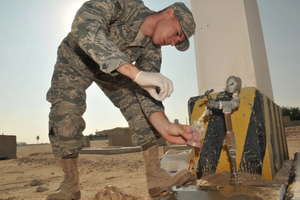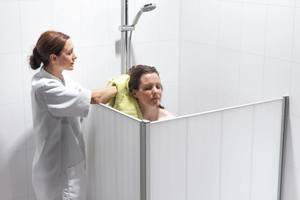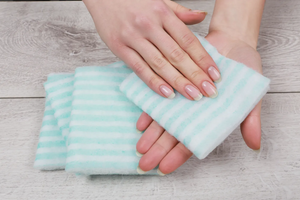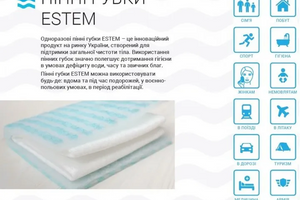It is not always the case that caregivers are available to help patients in the wards to maintain the proper level of body cleanliness. It is more common for people close to the patient to take care of the patient. The complexity of the procedure depends on the state of mobility of the sick person. Paralyzed, people after surgery, lying in intensive care, on hemodialysis have significant limitations in movement. They have to wash directly on the couch. How to wash in the hospital such people? First, a person must trust, because understanding the impossibility of personal care of the patient is strongly reflected in the psychological health. And the caregiver must professionally perform procedures for personal hygiene of the external genitalia.Secondly, bathing the whole body is not available in non-healed wounds, so it requires partial treatment.Thirdly, in cases where the movement of the person is completely prohibited, washing with special means that have bactericidal, restorative actions, moisturizing the skin, equalizing the pH environment is required.
Hygiene of the patient in a hospital institution with the possibility of personal visit to the shower may be limited if the bathroom: one for a large number of visitors, is far from the ward, there is no hot water, squeamishness of the patient. In this case, it is possible to use wet wipes, dry shower, wiping with a wet towel. In all, even public hospital wards, there are washbasins, so minimal washing and daily toilet are available on site.
How do I wash myself in hospital for a bedridden person?
The caregiver should be dressed in comfortable clothing. Stable shoes are of great importance. It is obligatory to adopt a pose in which the back is able to withstand the load during the turning of the patient, lifting his body parts. What will be needed during the procedure: sheets and diapers waterproof, to make up the bed, so that it does not get wet from flowing water; towels for wiping; foam washcloth or ordinary for soaping; cotton sponges, sticks for cleaning the ear lobes; warm water with a temperature of 30-35o C in a container; means for drying sweaty areas, moisturizing dry areas of the skin. For such people are especially relevant special hygienic preparations that do not need to be washed off after application. These can be lotions from different brands. Foam loofahs are gaining great popularity. They are easy to use. For the appearance of washing liquid, it is enough to wet the product in 25 g of water. This is a disposable thing. It is impregnated with a sufficient amount of drug, to treat the entire body.
Hygiene of the patient in a hospital institution with such a washcloth greatly simplifies the care process, because:
- It is stored in an individual sealed package for a long period of time.
- Consists of an impregnation that is recognized as a hygienic agent.
- The foam mixture corrodes body fat, but does not dry the skin, because the integrity of the lipid film is not disturbed.
- Dermatological gel protects the body from pathogenic flora, while not adversely affecting the beneficial microflora.
- Residues of the drug on the person are quickly neutralized, so it has hypoallergenic properties.
- There are no age restrictions for use.
- Daily use is available in the absence of contraindications.
- Such remedies are common in developed countries.
It is useful to combine a dry shower (as also called disposable foam sponge) with water procedures, as a better therapeutic effect is observed.
Hygiene of the patient in a hospital facility: step-by-step instructions
- Make the bed with a waterproof covering: oilcloth, diaper.
- The patient is laid on his back with his legs bent. To keep the body parts in the appropriate state, they are propped up with pillows. To keep the legs from slipping, a mat is placed under the feet.
- It is better to have at least two containers of water: with soap solution and clean water.
- It is allowed to use detergents with a neutral environment. Alkaline mixtures dry the skin, cause irritation. Cosmetics with fragrances are not recommended, as they can cause allergic reactions.
- It is important to observe the temperature regime in the room, since the patient does not move, he is prone to freezing. Therefore, it is recommended to wash each part of the body separately, wiping well.
- Washing begins with the head, neck, arms. Then come to the intimate area. After washing the feet. Brushing the teeth should not be neglected, even with the probe equipment.
- Do not put a lot of effort into rubbing, so the skin, which is less elastic and elastic than in a healthy person, will be damaged.
- It is necessary to pay attention to all skin folds, armpits. In these areas arise festers. During washing, you should perform circular movements, which act as a prevention of bedsores.
- For different parts of the body you need to use different loofahs. Accordingly, the change of water should be carried out after the treatment of dirty areas before moving to clean areas.
- Pay attention to washing the head.
A successful solution, which helped to think through the question of how to wash in the hospital for an immobile person, were inflatable tanks, which is enough



























